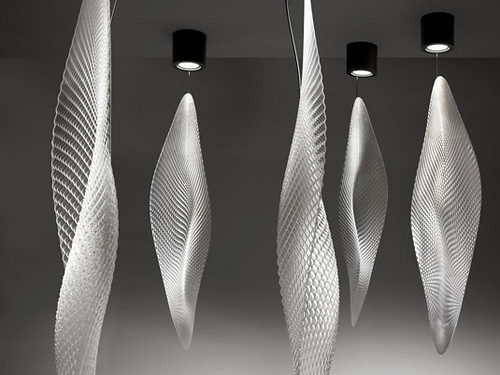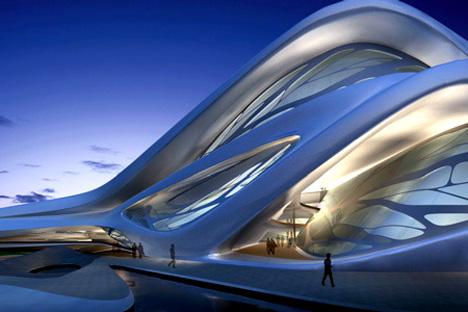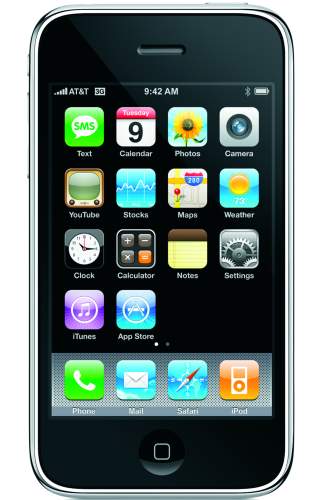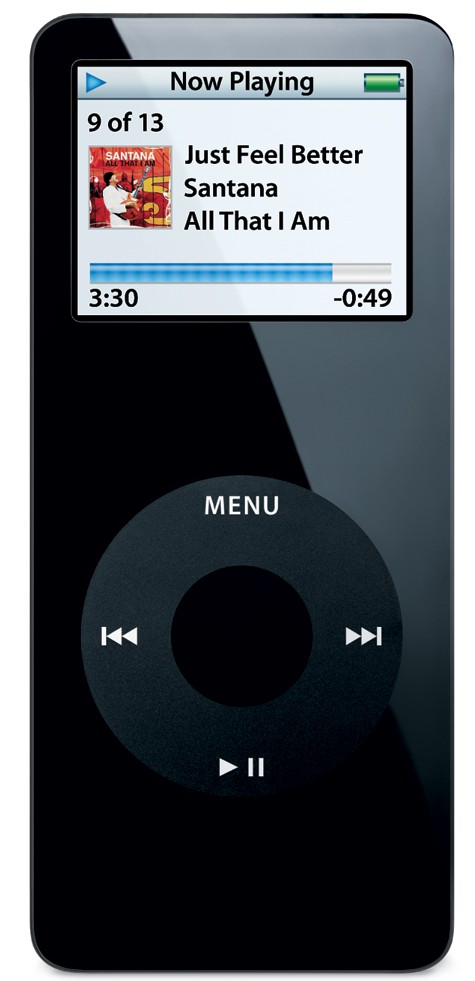“A brand is not a logo. A brand is not a slogan. A brand is not an identity, corporate or otherwise. A brand is not a symbol or a shape. It’s not mail shots, mission statements or mantras. It’s not colours, credos or calling cards. A brand is the total sensory experience a customer has with your company and its product or service.”
Now when most clients approach the Loft for ‘branding,’ we are usually asked to design a logo full stop. Now a memorable logo is a good starting point to introduce your brand. However, in creating a strong brand identity – it is barely scratching the surface. Unfortunately, for most of our clients, small and large, this is where their consideration of branding ends.

Although, larger companies are also guilty of this, this post is written squarely for all those with smaller businesses. Unfortunately, during the recession, the ones that have suffered most have been the smaller businesses who have seen their profits squeezed as their customers have mercifully voted with their feet. The most common scenario I am sure that most small business owners will be aware of is the following. If you have ever quoted for work (any kind of work?) and had your potential client say ‘Well such and such can do it for this price?’ Caring not, whether the product you offer is different, far more labour intensive or you are already offering an exceptional deal that severely eats into your profit margin. Simply expecting you to drop your price because Jimmy down the road can do it 20% cheaper. Such is the nature of the current climate, this situation is not rare.
Now this is not the fault of the potential client, they are absolutely within their rights to bargain for the best deal possible. Furthermore, with more and more people using the internet to shop around, they feel entitled to ask you for the best deal. However ask yourself this, why do we pay more than two pounds for a cafe latte from our local Starbucks? A cafe latte consists of steamed milk and coffee. The actual value of the coffee is probably around 30pence. How many people do you think ask Starbucks to do it for £1.50 because the shop round the corner does it for that price? Exactly, you would be laughed out of store.

Now I am not saying that people are asking the local chip shops for 20% off their fish suppers, they don’t. They do something that is even worst, they just stop going. So how does Starbucks obtain such a position of strength compared to the smaller businesses? Where it would seem frankly absurd for you the hard-pressed consumer, in these tough times, to ask for a small discount from a company that makes close to a billion dollar profit annually. Really, when you think about it, it’s crazy that we don’t.
Furthermore, how can Starbucks make such great margins on every coffee, yet remain so popular?
Well, you can be rest assured that a fair percentage of the two pounds you pay for your latte is pure profit. They really could discount if they wanted too, give the customer a better deal, but they don’t. So why, even though they are completely ripping us off (me included,) do they not feel compelled to sell their coffee at a cheaper price? After much debate, Starbucks would concede the reason you are paying so much for your latte is the ‘Starbucks Experience.’ They would be asbolutely right, it is the brand experience. And, in terms of their branding, it has nothing to do with their logo. And the reason we have no problem squeezing the local businesses within an inch of their lives and not the corporate superpowers? Is that most small businesses pay very little attention to their ‘brand experience.’
This is incredibly foolish on their part as, uncomplainingly, many people will pay extra for that brand experience. But what is the brand experience and how can you use it to enhance your business? Well, the good news is that anybody can create a strong brand. You neither have to be big nor have a massive marketing budget. Size is unimportant, emotions are king. The brands that prosper actually mean something to their audience. They make an emotional connection that ingrain themselves into people’s minds. Once a brand means something to somebody, the price of that service becomes more valuable and a premium rate becomes more justifiable.
Unless your company actually means something to people, it will only ever be a commodity, which means that people will only justify it by the lowest common denominator. Price! Once your company has some emotional value, it becomes a brand. Something respected and something people will pay a premium for. Furthermore, once a brand is at the forefront of people’s minds, as long as they are consistent, they are likely to return to this brand time and time again. Regardless of price, strong brands that are instantly definable are in the fast-lane to our senses, and this makes for excellent business, particularly for smaller companies. Many of us tend to stick to what we are familiar with, particularly in choosing good tradesman, suppliers or stockists, even if they are a litle more expensive.
Indeed, good brands are built on people’s perceptions. “Products are made in the factory, but brands are created in the mind.” For any person who owns a small company, it is important to know what you stand for. What’s the narrative? The rest is in the power of communication and how you accentuate the story. Basically what you choose to show your audience. For more established customers who have a familiarity with your service, they will already have formed an impression of your company based on the type of service you provided, but even that can be measured and controlled, just to remind people that you are the fastest printers in the land or the only tradesman who comes out at weekends. It is important that the seed is planted well and truly in your customer’s heads about what you do and where you stand.

Now in targeting new consumers, you will only really have two ways to make a connection. The quality of your business card, website, promotional material and the impression you give off yourself. Now, I am not going to lie, a lot of your clients will be put off by a sub-standard website/business card. If you want to charge for a premium service, you cannot then give out a business card that suggests otherwise or display a poor website.
To most people, these will be the only bases with which they ever define your brand, so it is important that they stand out and are of good (if possible, exceptional) quality. So the very basics of branding are important. But so is making full use of the senses.
See, hear, touch, taste and smell. Not everybody will be able to extend to the full sensory range, but if you have a product with strong tactile qualities or interesting scents or unique tastes. Use all of them, as it will undoubtedly create a more memorable vibe. When I think of Starbucks, I don’t necessarily think of the coffee, I think of the shop, or the pastries, the environment as a whole. A great brand experience is defined by subtle control of each of the senses. However, even more important in building a great brand in this respect are the people who define your business. People buy off people, simple as that.

For the majority of people representing their businesses, looking and sounding like your brands are the only two controllable factors. So do you actually look like your brand? Does what you wear chime with what your brand wants to say? Does each of the individual facets of your appearance say what your brand wants it to say? Every aspect from belts, shoes and bags are a way of expressing your brand. Simply wearing expensive stuff won’t necessarily work. If your brand’s young and funky- be young and funky. If your brand is super corporate, then be corporate. If your brand is built on good solid workmanlike values, then dress accordingly. There is no substitute for the truth. Furthermore, body language is just as important as dress. With regards with what you say. Know your narrative; be able to portray how this sets you apart from your competitors. Have anecdotes and tales that support your story. Think of stuff that will make a connection with who you are speaking too.

And finally, in building that strong brand, consistency is key. Whatever you’re communicating, make sure you’re communicating it consistently so the brand identity doesn’t get muddled. Be it face to face interaction, or brochures or websites. These are just links that stand between your brand and your audience. However, each of the links is important; any inconsistencies will damage the brand in people’s minds. The bigger your business, the more links there are to be controlled- furniture, staff, uniforms, ad campaigns etc. But to build a strong brand, you must have something worth saying in the first place. Storytelling has never been more important. Clever marketing is no substitute for the truth; it is a subtle suggesting of it. It is there to remind an audience of why you are valuable not to deceive them. Marketing for the sake of marketing is unlikely to enhance the value of your brand but having a rich story that informs, entertains and inspires your audience will.
It’s the difference between having your company respected like a strong brand, and not treated like a worthless commodity.
Benedetto Bordone is a designer at the loft | web design Glasgow
< < < back to comments





































Dec
Windows 8
Posted by benbordone / Comment, News
As a little boy, I used to love playing with Lego. Building houses, ships and cars with Lego was one of my favourite hobbies. And when the time came to move onto Technic, I did so gratefully. My young mind aching to be challenged in greater ways. But anybody who is familiar with Lego or Technic, or building anything for that matter will know that once you’ve reconstructed the same thing once or twice. You get better at it.
You find room for improvement, you find pieces that may be superfluous, think of better ways to build something and think of more elegant solutions. I remember being very firmly told by my friend Alexandre, a senior designer at Honda, who also happened to be a world-class trumpet player.
Before creating. Learn!
Learn from what exists. Learn what works. And learn what doesn’t.
Learn from the masters.
In essence, he told me to build on and respect existing practices and structures in car design before going off on a limb trying to reinvent the wheel with flights of fancy.
The difference between student and professional work and good advice.
I started to think of Alexandres advice recently when I seen the new Windows 8 Operating System. Boy is it radical. It’s fresh and a huge step forward for Microsoft. It has the impetuosity and care free abandon of youthful thinking.
But you see, building a computer operating system is like building anything. It’s only by building, testing, constructing, re-constructing, doing, ending and starting again that a great system evolves. You have to be able to dig deep into the detail first before proposing structural changes.
Trust me with an object as heavily used as an operating system, form is definitely a consequence of function. No matter how smart the interface is. Nothing will dull the novelty quicker than something that doesn’t work properly.
Apple have got this right brilliantly recently with the vast number of OS iterations that both work and function beautifully. The incremental and iterative process used by Apple means that their operating system just works and the fact that it works beautifully enhances the perception that it is beautiful.
I cannot tell you how thrilled I am to see Microsoft do something as Bold as Windows 8. This is a company that has thrown off the shackles of conservatism and embraced radicalism. One could even say it has ‘out-appled’ Apple. I love the strength of the concept, the fact that one Operating system can cross several platforms. And I do rather like the minimal graphic style. The strength of its boldness, has even begun to ask questions about Apple and their ‘skeumorphic’ approach. So much so that their top dog in design – Sir Jonathan Ive has been drafted in to oversee the development of their new OS.
Visually, I must say that Windows 8 is a huge step forward over 7. It is a sensible evolution of the Microsoft Vision 2019 with the breaking down of tasks/applications into mini modules, centred on the screen. This is obviously common throughout traditional desktops, tablets and mobile devices.
Despite the radical appearance, you are still reminded that this is Microsoft and not Apple. As a car designer, I remember Alfa Romeo investing a lot of time and effort to mimic the pleasant thud when you close a car door. Companies like Mercedes and Audi had become lauded for their quality and the door thud was symbolic of their success. Despite their best efforts, Alfa Romeo was never quite able to replicate the same feeling of quality. Kind of get the same impression here.
Microsoft should be praised for their boldness but their execution, in design, isn’t quite on the same level as Apple. The icons for example are a touch on the small side proportionally and more than that they lack that attention to detail that is required. Minimalism is a wonderful aesthetic direction, particularly when executed well. However, what many forget is that reducing an object (or part of an interface in this example) to its most core components means that every element has to have the right depth and attention to detail in its own right.
Microsoft and aesthetics is a bit like Alfa Romeo and quality. With the best will in the world, it’s never quite there. The new Microsoft logo is also testament to this. However, without being too harsh to Microsoft; this is the kind of Operating System Apple should be building and I believe that their rivals in Silicon Valley will be incredibly jealous that their clothes have been stolen by their competitors. Conceptually, it’s quite a bit ahead of the game.
However, before getting carried away with Windows 8. I must return to the original point and heed this warning. The beauty and conceptual integrity of the Microsoft interface will only work commercially if it performs and functions well. It’s what made Windows 95 so popular in the first place.
According to one of my great design heroes Richard Seymour…
“We don’t see beauty in objects as they are but as we are.”
Everything is beautiful to different people in different ways. The most beautiful objects in anybody’s eyes are those that work well, that enhance our lives. As many of you know I never shut up about how much I love my BlackBerry.
Why?
Because it allows me to type on the move; to blog, to send e-mails. All effortlessly so!
It’s why I hated the I-phone I had for three months. Because I just couldn’t do that.
You won’t find too many people in love with their operating systems but subconsciously people feel the exact same way.
If Microsoft 8’s cool new concept and layout allows users to interact with their word processors, e-mail, music, Facebook etc with greater ease, then boy do they have a product.
Otherwise, its novelty will quickly wear off and people will continue to flock to Apple.
Time will tell…